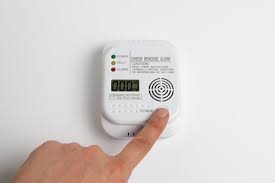The Importance of Carbon Monoxide Monitors for Your Home
Carbon monoxide (CO) is a silent killer that poses a serious threat to households. This colourless, odourless gas can be produced by faulty gas appliances, blocked chimneys, or burning charcoal indoors. The danger lies in the fact that CO is virtually undetectable without the help of a carbon monoxide monitor.
Installing carbon monoxide monitors in your home is crucial for your safety and well-being. These devices are designed to detect the presence of CO in the air and alert you if levels become dangerous. Early detection is key to preventing CO poisoning, which can lead to symptoms such as headaches, dizziness, nausea, and even death.
When choosing a carbon monoxide monitor for your home, opt for one that meets British Standards and carries the Kitemark symbol. Place monitors in areas where there are potential sources of CO, such as near gas boilers, fireplaces, or stoves. Regularly test your monitors to ensure they are functioning correctly.
Remember that carbon monoxide monitors are not a substitute for proper maintenance of gas appliances. It’s essential to have your heating systems, boilers, and chimneys inspected and serviced annually by qualified professionals. Good ventilation is also key to reducing the risk of CO build-up in your home.
By investing in carbon monoxide monitors and taking preventive measures, you can protect yourself and your loved ones from the dangers of this deadly gas. Stay vigilant, stay safe!
Essential FAQs About Carbon Monoxide Monitors for the Home
- What is a carbon monoxide monitor?”,
- How do carbon monoxide monitors work?”,
- Where should I place my carbon monoxide monitor?”,
- How often should I test my carbon monoxide monitor?”,
- Can a carbon monoxide monitor detect other gases?
- Are carbon monoxide monitors a substitute for regular maintenance of gas appliances?
What is a carbon monoxide monitor?”,
A carbon monoxide monitor is a vital safety device designed to detect the presence of carbon monoxide gas in the air. This colourless, odourless gas is produced by incomplete combustion of fuels such as gas, oil, and wood, and can pose a serious health risk if levels become elevated. A carbon monoxide monitor continuously monitors the air for CO levels and emits an alarm if dangerous concentrations are detected, alerting occupants to the potential threat. Installing a carbon monoxide monitor in your home is essential for early detection of CO leaks and ensuring the safety of you and your family.
How do carbon monoxide monitors work?”,
Carbon monoxide monitors work by continuously monitoring the air in your home for the presence of carbon monoxide gas. These devices contain sensors that can detect even low levels of CO in the air. When carbon monoxide is detected, the monitor sounds an alarm to alert you to the potential danger. Some monitors also display digital readings of CO levels for added convenience. By promptly detecting any traces of carbon monoxide, these monitors provide an early warning system that can help you take immediate action to protect yourself and your family from CO poisoning.
Where should I place my carbon monoxide monitor?”,
When it comes to placing your carbon monoxide monitor in your home, it’s essential to choose strategic locations for optimal safety. Experts recommend installing a CO monitor in every room where there is a potential source of carbon monoxide, such as near gas appliances like boilers, water heaters, and gas stoves. Additionally, it’s advisable to place a monitor in bedrooms or sleeping areas to ensure early detection of CO while you are most vulnerable. Remember to follow the manufacturer’s guidelines for placement and testing frequency to ensure that your carbon monoxide monitor functions effectively and provides you with the protection you need.
How often should I test my carbon monoxide monitor?”,
It is recommended to test your carbon monoxide monitor at least once a month to ensure that it is functioning properly. Testing your monitor regularly helps to verify that the alarm system is operational and can effectively detect any presence of carbon monoxide in your home. Additionally, it is important to follow the manufacturer’s instructions for testing and maintenance to guarantee the reliability of your carbon monoxide monitor in providing early warnings of potential dangers. Regular testing is a simple yet crucial step in safeguarding your household against the silent threat of carbon monoxide poisoning.
Can a carbon monoxide monitor detect other gases?
A common query regarding carbon monoxide monitors for the home is whether they can detect other gases besides carbon monoxide. Carbon monoxide monitors are specifically designed to detect the presence of carbon monoxide gas in the air. They are not capable of detecting other gases such as natural gas (methane), propane, or smoke. It’s important to use the right type of gas detector for each specific gas you want to monitor in your home to ensure comprehensive safety measures are in place.
Are carbon monoxide monitors a substitute for regular maintenance of gas appliances?
Carbon monoxide monitors are an essential safety measure for detecting the presence of this deadly gas in your home. However, they are not a substitute for regular maintenance of gas appliances. While monitors provide an extra layer of protection by alerting you to dangerous CO levels, proper upkeep and servicing of gas boilers, heaters, and other appliances are crucial to prevent CO leaks in the first place. It’s important to have your gas appliances inspected annually by qualified professionals to ensure they are functioning safely and efficiently. Combining the use of carbon monoxide monitors with routine maintenance is the best way to safeguard your household against the risks of CO poisoning.

